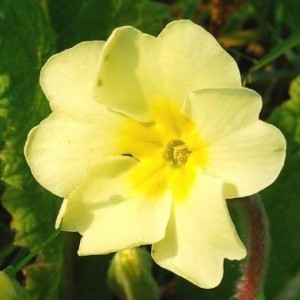A gallery of flowers that bloom around Easter

[cs_section id=”” class=” ” style=”margin: 0px; padding: 45px 0px; ” visibility=”” parallax=”false”][cs_row id=”” class=” ” style=”margin: 0px auto; padding: 0px; ” visibility=”” inner_container=”true” marginless_columns=”false” bg_color=””][cs_column id=”” class=”” style=”padding: 0px; ” bg_color=”” fade=”false” fade_animation=”in” fade_animation_offset=”45px” fade_duration=”750″ type=”1/1″][cs_text id=”” class=”” style=”” text_align=””]Flowers blooming are the perfect representation of the Easter season, a period known for renewal. This is a gallery that presents a variety of native Irish flowers that bloom around Easter. A major source for the information in this article came from the Wildflowers of Ireland website. [/cs_text][/cs_column][/cs_row][/cs_section][cs_section id=”” class=” ” style=”margin: 0px; padding: 45px 0px; ” visibility=”” parallax=”false”][cs_row id=”” class=” ” style=”margin: 0px auto; padding: 0px; ” visibility=”” inner_container=”true” marginless_columns=”false” bg_color=””][cs_column id=”” class=”” style=”padding: 0px; ” bg_color=”” fade=”false” fade_animation=”in” fade_animation_offset=”45px” fade_duration=”750″ type=”1/1″][x_slider animation=”slide” slide_time=”7000″ slide_speed=”1000″ slideshow=”false” random=”false” control_nav=”false” prev_next_nav=”true” no_container=”false” ][x_slide]
Broom
The bright yellow 25mm long flowers are sometimes marked with red. After pollination the stamens protrude from between the upper part of the flower and the keel, which is the lower part.[/x_slide][x_slide]
Greater Periwinkle
This beautifully designed flower is worth stopping to look at closely. The violet-blue petals are fused together toward the centre of the flower, the corolla continuing into a short tube. The dark evergreen, shiny leaves are ovate and stalked with hairy edges.[/x_slide][x_slide]
Primrose
The Latin name translates as ‘First flower’ and indeed this little plant even shows its head before the end of the old year in sheltered places (see below). Our little ‘Sabhaircín’ generally flowers from April to May when its pale yellow 2-3cm flowers with their deep yellow centres decorate grassy banks, woodlands and roadsides. Each flower has its own leafless stalk.[/x_slide][x_slide]
Yew
Best known for its fruit, it is less well-known for its very small green-yellow flowers. Themale and female flowers grow on separate trees, the male flowers bearing yellow pollen which they shed in February and March. The ‘flower’ in the picture below is a female. The fruit is a fleshy red cup-shaped berry which contains one extremely poisonous seed. [/x_slide][x_slide]
Snowdrop
A low-growing perennial which is found growing beside streams, on roadsides and in damp woods, this plant is a garden escape which has naturalised in the eastern side of the country. The familiar little flowers have three white outer ‘petals‘ (15-25mm long) – in reality these are sepals – and three white inner petals, each of these having a cleft with a green patch around it.[/x_slide][x_slide]
Early Purple Orchid
The colour of theflowers can vary from deep purple, through pink to white and the flowers can be distributed in dense or quite loose spikes. Each flower (8-12mm long) has a lower lip or labellum which is shallowly lobed with dark purple spots running down the pale upper part of the central, notched lobe. [/x_slide][x_slide]
Dense Flowered Orchid
A self-pollinating orchid with a tightly-packed spike (2–6 cm long) of ten to thirty pale, creamy flowers – sometimes with a pinkish cast. Each of these seem to be almost closed over with only the lower, forked lip protruding from the hood formed by the sepals and upper petals. The erect stem, which reaches 20 cm, arises from two or three basal, lanceolate and, occasionally, spotted leaves. [/x_slide][/x_slider][/cs_column][/cs_row][/cs_section]







